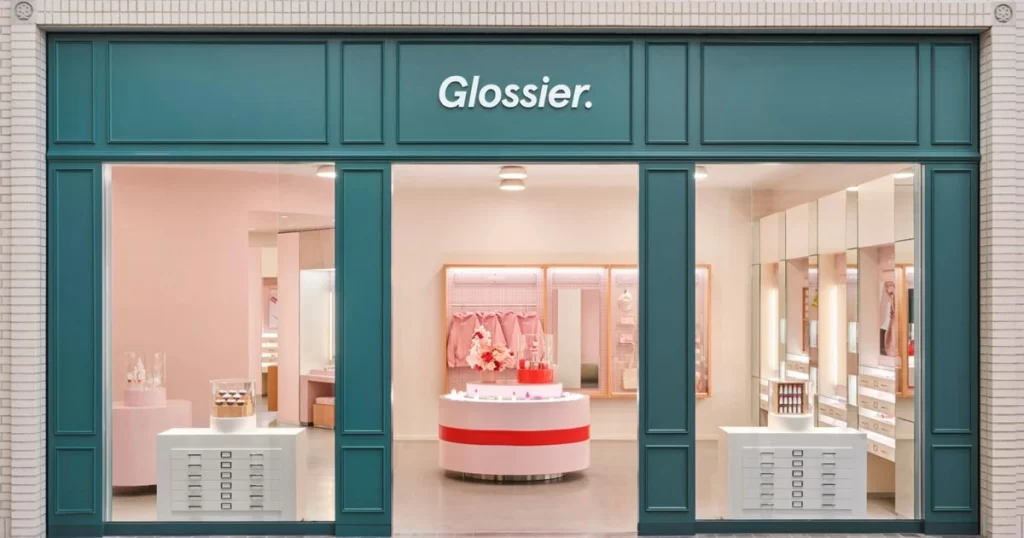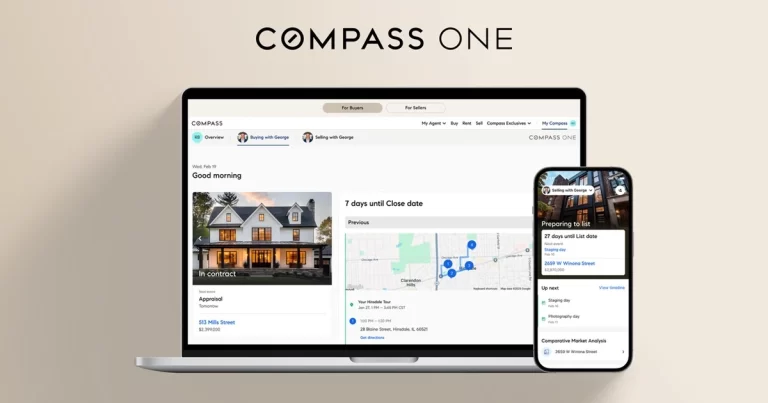Introduction – Glossier’s DTC Disruption of the Beauty Industry
In today’s digital-first beauty world, Glossier stands out as a pioneer. Built from a blog by Emily Weiss, the brand quickly evolved into a global force in Direct to Consumer beauty—driven not by traditional ads, but by community voices and content that clicks on social media.
The Direct to Consumer model gave Glossier the power to skip retailers, speak directly to customers, and build loyalty through transparency and accessibility. Paired with a smart, authentic Social Media Marketing strategy, the brand turned likes and shares into real business growth.
This case study explores how Glossier became a standout among direct to consumer beauty brands, breaking down the strategies, wins, and lessons that shaped its rise.
Company Snapshot – Who is Glossier?
Founded in 2014 by Emily Weiss, Glossier grew from a blog into one of the most influential direct to consumer beauty brands. Its roots in Into The Gloss gave it a unique edge—real customer feedback shaped the first product line and still drives the brand’s evolution.
What makes Glossier stand out isn’t just its minimalist packaging or soft branding—it’s how deeply it involves its community. From product input to marketing, the brand treats customers like collaborators, not just buyers.
As a Direct to Consumer cosmetics brand, Glossier controls every part of the customer journey. This full ownership allows it to stay nimble, personalize experiences, and build brand loyalty from the first click to the last shipment.
Today, Glossier is valued at over $1 billion and continues to inspire new d2c beauty brands—but few have matched its blend of digital fluency, emotional branding, and customer closeness.
Why Glossier Chose the Direct to Consumer Model
Glossier didn’t just stumble into the Direct to Consumer model—it was a conscious decision from the beginning. Emily Weiss recognized early on that traditional beauty brands were disconnected from the real needs and voices of consumers. Instead of relying on retail stores, sales associates, or third-party distributors, Glossier built a direct line between the brand and its community.
Cutting Through the Noise
In an industry crowded with legacy giants and glossy magazine ads, Glossier saw an opportunity: build a beauty brand that listens first. By choosing a direct to consumer approach, they skipped the middlemen and gained full control over how their products were sold, marketed, and experienced.
Here’s why that decision mattered –
- Ownership of Customer Data: Unlike retail models, DTC gave Glossier direct access to its customers’ behaviors, preferences, and feedback—fuel for rapid product development and personalized marketing.
- Faster Feedback Loops: With no retailers in the way, Glossier could launch, iterate, and relaunch products faster based on community input.
- Brand Consistency: Every touchpoint—from packaging to web design to customer service—reflected Glossier’s voice, not a retailer’s shelf.
- Higher Margins: Selling directly means fewer revenue splits with retail partners, allowing for better margins and reinvestment into growth.
Side-by-Side: Retail vs. Direct to Consumer
| Feature | Traditional Retail Model | Direct to Consumer (DTC) Model |
|---|---|---|
| Product Distribution | Through third-party retailers | Sold via brand’s own website/stores |
| Customer Interaction | Indirect, limited insights | Direct, full access to feedback/data |
| Marketing Channels | In-store & mass media | Digital-first, social media-focused |
| Brand Control | Shared with retailers | 100% brand-owned |
| Time to Market | Longer | Faster, agile |
Glossier’s Strategic Advantage
This DTC-first foundation allowed Glossier to shape its own narrative—and shape it fast. By selling directly through its website and later pop-up shops, it cultivated an experience that felt personal, digital-native, and community-led. Customers didn’t just buy a product; they bought into a movement.
In an era where authenticity matters more than airbrushed perfection, Glossier’s Direct to Consumer playbook proved not only relevant but revolutionary.
Social Media Marketing as Glossier’s Growth Engine
When it comes to scaling a beauty brand in the digital age, few have done it better than Glossier. While many brands treat social media as a marketing afterthought, Glossier built its identity on it. From day one, Social Media Marketing wasn’t just a tactic—it was the strategy.
The Glossier Formula: Engagement First, Sales Second
What made Glossier stand out wasn’t just the pastel aesthetics or clean packaging. It was how the brand made followers feel seen, heard, and part of something bigger. Instead of shouting about products, Glossier invited people into the conversation.
Here’s how that played out across platforms –
- Instagram as a Brand Canvas: High-quality visuals, user-generated content (UGC), and comment-first culture turned Glossier’s feed into a digital mood board. Every post felt like it came from a best friend, not a brand.
- TikTok for Virality and Discovery: From skincare tutorials to behind-the-scenes looks, TikTok gave Glossier a playground to reach Gen Z in an authentic, entertaining way.
- YouTube for Depth: Long-form video content—product how-tos, interviews, and real customer stories—added depth and transparency.
- Community Spotlights: Glossier regularly features real customers, micro-influencers, and everyday users to build credibility and reinforce its community-first identity.
Turning Followers into Fans—and Customers
Unlike traditional advertising, Glossier’s social strategy focused on two-way relationships. Comments weren’t ignored—they were fuel for content and product ideas. Every campaign, from “Skin First” to “Glossier Pink,” was deeply rooted in what the audience was already saying.
And the results? Viral product launches, waitlists, and a cult following that translated likes into lifetime value.
By mastering social media marketing, Glossier didn’t just market beauty—it redefined how direct to consumer beauty brands connect, convert, and grow in public.
Building a Cult Following Through Influencers
Glossier didn’t just use influencers—it turned everyone into one. From everyday users with a few hundred followers to big-name beauty bloggers, Glossier’s influencer strategy was all about authenticity over advertising.
A Community-Driven Approach
While most beauty brands focused on celebrity endorsements and glossy campaigns, Glossier doubled down on relatability. It understood something critical early on: modern consumers trust people like them more than they trust ads.
Here’s how Glossier rewrote the influencer playbook:
- Micro-Influencers as Brand Ambassadors: Rather than pouring budget into one celebrity post, Glossier partnered with thousands of micro-influencers—real fans who genuinely loved the products.
- Peer-to-Peer Recommendations: Customers were encouraged to share their routines and looks using Glossier products. The brand reposted this content, giving users visibility and making the brand feel human.
- Affiliate & Referral Programs: Glossier empowered loyal users to earn commission or discounts by referring products through unique links—a strategy that amplified trust and created viral reach.
- User-Generated Product Hype: Cult favorites like Balm Dotcom and Boy Brow didn’t blow up because of ad spend—they became must-haves through word-of-mouth buzz on social media.
Why It Worked
Glossier’s influencer strategy aligned perfectly with its Direct to Consumer model. Because the brand owned the customer relationship, it could reward loyalty, collect feedback, and foster a sense of exclusivity without gatekeepers.
Key Benefits:
- Built a grassroots army of unpaid evangelists
- Created content at scale without heavy production costs
- Humanized the brand through real voices and faces
Campaign Highlights
| Campaign Name | Strategy | Result |
|---|---|---|
| #GlossierPink | UGC & color branding | Became a recognizable aesthetic online |
| Glossier Rep Program | Micro-influencer outreach | 500+ reps generated organic sales & traffic |
| Boy Brow Launch | Community-first preview | Product sold out in days, became a best-seller |
By prioritizing trust, community, and conversation, Glossier built something deeper than a customer base—it built a movement. And that movement continues to fuel one of the most successful direct to consumer beauty brands in the game.
Metrics That Matter – Performance Insights
To truly understand Glossier’s impact, you need to look beyond product lines and branding—and into the numbers. From follower growth to engagement rates, Glossier’s performance on social media speaks volumes about the effectiveness of its Direct to Consumer and Social Media Marketing strategies.
Social Reach & Engagement
The chart below illustrates Glossier’s estimated reach across major platforms, paired with their average engagement rates:
- Instagram: With over 3.2 million followers, this remains Glossier’s strongest platform. With a good engagement rate over industry average, thanks to user-generated content and community-driven campaigns.
- TikTok: Although newer to the platform, Glossier’s 9%+ engagement rate shows high traction among Gen Z audiences through bite-sized tutorials and trend-driven content.
- YouTube: A smaller but more focused presence with around 200K subscribers and strong watch time. Used primarily for in-depth product demos and brand storytelling.
Performance Highlights:
- Product Drops often result in instant sell-outs—especially for items like Boy Brow and Cloud Paint.
- Customer Retention is driven by authentic interaction and user features, not discount codes.
- UGC accounts for a large share of content engagement, reinforcing trust and reach organically.
Glossier’s strategy proves that you don’t need massive ad budgets to win—you need to be where your audience is, speaking their language, and listening just as much as you post.
Glossier Annual Revenue (2021–2023)
Glossier’s revenue trajectory from $180M in 2021 to $320M in 2022, and $400M by March 2023, reflects a rapid rebound following internal restructuring and expansion into retail channels. This growth underscores the strength of its Direct to Consumer model, bolstered by strategic partnerships (e.g., Sephora) and revitalized Social Media Marketing under new leadership.
Competitive Landscape – Where Glossier Stands
Glossier may have helped define the modern Direct to Consumer beauty space, but it’s far from the only player in the game. As the DTC model has grown in popularity, so too has the competition. From celebrity-backed disruptors to science-driven skincare startups, Glossier operates in a crowded, fast-evolving ecosystem.
Key Competitors in the Direct to Consumer Beauty Space
Several brands have emerged with similar direct to consumer strategies, each carving out its niche:
- Fenty Beauty – Founded by Rihanna, combines inclusive shade ranges with high-impact marketing.
- Drunk Elephant – Known for its clean, clinical skincare with strong ingredient transparency.
- The Ordinary (DECIEM) – Offers science-backed products at affordable price points, with minimalist branding.
- Rare Beauty – Backed by Selena Gomez, focused on mental health advocacy and inclusive beauty.
- Summer Fridays – Built on influencer power and curated, Instagram-friendly skincare.
What Sets Glossier Apart
While these brands excel in their own right, Glossier’s edge comes from its community-first ethos and consistent visual storytelling. It didn’t just enter the market—it shaped it.
Glossier’s Differentiators:
- Built on authentic customer feedback from Into The Gloss
- Deep social media integration, especially on Instagram and TikTok
- Minimalist, inclusive branding that resonates with Gen Z and millennials
- Strong focus on lifestyle, not just product performance
Brand Comparison Table
| Brand | Business Model | Social Strategy | Product Focus | Unique Edge |
|---|---|---|---|---|
| Glossier | DTC | Community-driven, UGC | Everyday essentials | Customer-first development, clean aesthetic |
| Fenty Beauty | Hybrid (DTC + Retail) | Celebrity-led, high production | Makeup | Inclusivity pioneer, cultural cachet |
| The Ordinary | DTC | Ingredient education | Skincare | Science-first, transparency |
| Drunk Elephant | DTC | Clean beauty storytelling | Skincare | Ingredient blacklist, brand purity |
| Rare Beauty | Hybrid | Advocacy + celebrity voice | Makeup | Mental wellness + authenticity focus |
Market Pressure & Opportunities
As the number of d2c beauty brands grows, Glossier faces the challenge of standing out without overextending. While its early-mover advantage is still strong, staying competitive will depend on innovation, audience engagement, and smart channel diversification.
At the same time, newer brands are borrowing from Glossier’s playbook—proving that its strategies weren’t just trendy, but industry-shaping.
Challenges – Glossier’s Growing Pains
Even a beloved Direct to Consumer brand like Glossier has faced its share of hurdles. From algorithm shifts to internal restructures, its journey hasn’t been without friction.
- Shifting Algorithms & Platform Dependency: Glossier’s success was built on Social Media Marketing, but changes to Instagram and TikTok algorithms limited organic reach. Campaigns that once thrived started seeing diminishing returns without paid support.
- Balancing Online and Offline Growth: Expanding into retail with pop-ups and Sephora brought visibility—but also complexity. The pandemic disrupted physical store plans, revealing the risk of overreliance on one sales channel.
- Internal Challenges: In 2022, Glossier laid off over 80 employees and saw founder Emily Weiss step down as CEO. These shifts reflected the pressure of scaling fast while maintaining a community-first identity.
- Rising Competition: A surge of d2c beauty brands—many inspired by Glossier—intensified the landscape. Competitors replicated its minimalist aesthetic, forcing Glossier to evolve to stay ahead.
Lessons from Glossier’s Direct to Consumer Journey
Glossier’s evolution from a beauty blog to a market-defining Direct to Consumer brand showcases the power of authentic community, purposeful branding, and strategic Social Media Marketing. By building directly with its audience and prioritizing digital-first engagement, Glossier didn’t just follow trends—it created them. While the brand has faced challenges, its journey offers a powerful blueprint for how modern direct to consumer beauty brands can innovate, connect, and scale in a competitive space.
Key Takeaways
- Community feedback can be a foundation—not just an input—for brand building.
- Direct to Consumer models allow brands to control messaging, pricing, and customer experience.
- Social media is more effective when treated as a two-way conversation, not just a marketing megaphone.
- Micro-influencers and user-generated content can outperform traditional advertising in trust and conversion.
- Continuous product innovation and inclusivity are essential to long-term brand loyalty.
- Diversifying digital channels protects against platform algorithm shifts and market fatigue.




